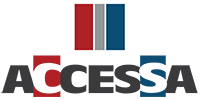Identifying trends from vague signals
As a supply chain, you’re party to an expansive ecosystem that changes constantly. Your control consists of 1) how you respond to change and 2) how you adapt your business [people, product, place, processes or pitch (your value proposition)] in order to benefit from opportunities and avoid the perils.
Leaders are challenged to identify and understand the trends that will be relevant to their business, now or in the near future. They must lean in, tune out the noise, and highlight the important stuff in order to make smart choices.
One way to frame it is to ask; at what point will our business cease to exist, fifteen years, twenty? “Ultimately, the answer depends on how well you anticipate and adapt to long-term shifts that might not even be visible, or that are visible but their exact direction and amplitude is not yet known. It’s not only companies that are affected by trends and megatrends. Complete industries can undergo very profound changes due to these shifts.”*
Be industrious, don the safety glasses, and connect the dots in the news you find interesting. Here are 21 examples. In how many can you find potential relevance to your business?
$2,204,000,000
2012 revenue from all additive manufacturing products and services worldwide
http://www.emdt.co.uk/daily-buzz/medtech-avid-consumer-additive-manufacturing
29:1
Ratio for the number of nuclear reactors, including existing or those being built, in China vs. the U.S.
Bloomberg Businessweek8.7%
Growth in the annual rate of industrial production, the fastest rate since the mid-1990s
http://www.mmsonline.com/articles/machine-tool-spending-up-again-in-2013
250,000,000
Number of tablet computers expected to sell in 2013 (exceeding laptops)
http://www.qz.com/86532/explosive-tablets-sales-will-overtake-pcs-in-1-to-2-years/
39
Percentage of U.S. employees that feel they have sufficient internal career advancement opportunities before them
Bloomberg Businessweek1 Terabyte
Data capacity of the new Kingston Predator mini flash drive
Bloomberg Businessweek32,000
Bottles of wine that ship bulk from Australia in one 24,000-liter plastic bladder, saving $.25 per bottle in shipping costs
Bloomberg Businessweek
28.3%
Estimated amount of additive manufacturing tied to the production of parts for final products, versus models, prototypes, patterns, and other kinds of parts
http://www.mmsonline.com/articles/machine-tool-spending-up-again-in-2013
1.1 Million
Number of industrial robots used across the world by the end of 2013
257,000
Number of plug-in electric vehicles predicted to sell globally in 2013. North America will account for about 66,000 of those unit sales
Pike ResearchNovember 2008
The month the consumer economy ended. “More than an economic downturn, it was an inflection between two economies: Consumer and creator”
—futurist, Paul Saffo
http://wwwforbes.com/sites/tedgreenwald/2011/10/19/the-creator-economy-futurist-paul-saffo-on-the-new-business-epoch/
$8,000,000,000
Projected worldwide spending on antivirus software in 2013
http://www.ifr.org/industrial-robots/statistics/
700%
Projected worldwide growth of non-military unmanned aerial vehicles (drone) between 2012 and 2018 with expenditures exceeding $89 billion over the next ten years
American Institute of Aeronautics and Astronautics (AIAA)5 Billion
Number of smartphones sold between January 2013 and 2016
Bloomberg Businessweek7,400,000,000
Barrels of oil resting in the shale formations of North Dakota and Montana, which is double the 2008 estimateU.S. Geological Survey
$10,000
Amount, per unit, GM will cut from the production cost of the Chevrolet Volt by 2014
Bloomberg BusinessweekHere are five more:
HIT Solutions believes the more your business keeps up with important trends, the more you will improve your product, and improve your bottom line.
Leave me your comments below; share your thoughts.

